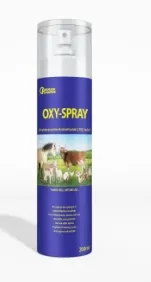
Tem . 22, 2025 15:56 Listeye geri dön
Specific Protocols for Animal Injections
Animal healthcare relies on precise injection protocols to maintain wellness across species. Whether managing cat injections for feline immunity, implementing cattle injection strategies for herd health, or administering puppy injections during critical developmental stages, understanding species-specific requirements is essential. This article explores the technical and practical aspects of these injections, emphasizing safety, efficacy, and best veterinary practices.

Classifying Essential Types of Cattle Injections for Herd Health
Cattle management hinges on targeted injections to address prophylactic, therapeutic, and nutritional needs. Types of cattle injections include prophylactic vaccines for diseases like foot-and-mouth and brucellosis, therapeutic antibiotics for infections, and nutritional supplements for vitamin or mineral deficiencies. Proper administration subcutaneous or intramuscular in the neck region requires sterile technique and needle gauge selection to prevent tissue damage or abscess formation. Herd managers must align types of cattle injections with regional disease prevalence, ensuring calves receive primary doses within the first few months of life to establish foundational immunity.
In intensive farming systems, rotational use of types of cattle injections helps prevent pathogen resistance, particularly for therapeutic antibiotics. Veterinarians often recommend separating nutritional injections from disease-specific formulations to avoid chemical interactions, ensuring each medication achieves optimal bioavailability.
Optimizing Cat Injections for Feline Health and Wellness
Cats require careful handling during cat injections, which include core vaccinations for rabies and calicivirus, lifestyle-adjusted boosters, and treatments for chronic conditions like diabetes. Subcutaneous injections in the interscapular region minimize sarcoma risk, while insulin administration for diabetes demands consistent abdominal site rotation and post-injection glucose monitoring. Stress reduction through gentle restraint and calm environments enhances compliance and safety. The importance of early cat injections in kittens to build resistance against feline, a highly contagious disease that can be fatal without proper vaccination.
For senior cats, veterinarians may adjust the volume and frequency of cat injections to accommodate age-related physiological changes, such as reduced muscle mass or altered metabolism. Post-injection observation for subtle signs of discomfort like reluctance to groom or changes in appetite allows for timely intervention and ensures treatment remains tolerable.
Strategic Puppy Injections for Early Immune Development
Structured puppy injections during the critical early weeks protect against parvovirus, distemper, and other core diseases, often combined with deworming. Subcutaneous injections in the neck or scruff ensure easy medication dispersion, with mild side effects like lethargy typically resolving quickly. Monitoring for severe reactions and maintaining a stress-free environment support immune development and long-term health. Incomplete puppy injections leave young dogs vulnerable to preventable illnesses, underscoring the need for strict adherence to vaccination schedules.
Breed specific risks also influence puppy injections, with certain genetic lines requiring additional protections against diseases like leptospirosis or Lyme disease. Veterinarians factor in the puppy’s environment such as rural vs. urban exposure to customize vaccination plans, ensuring comprehensive coverage without unnecessary medication.
Core Safety Principles for Cattle Injection and Cross-Species Applications
All species share fundamental safety practices: refrigerated storage to preserve medication potency, sterile equipment to prevent cross-contamination, and detailed record-keeping for dosage tracking. Veterinarians tailor plans to age, health status, and environmental risks for cattle, considering herd grazing patterns; for companion animals, lifestyle factors to optimize efficacy and minimize adverse reactions. A critical safety measure across all species is verifying the correct dosage of cattle injection or other formulations, as miscalculations can lead to ineffective treatment or toxic reactions.
In livestock settings, using disposable needles for each cattle injection reduces the risk of transmitting blood borne pathogens like bovine leukemia virus. Proper disposal of medical waste alongside rigorous cleaning of injection sites further safeguards herd health, demonstrating the interconnectedness of individual procedures and population wide wellness.
Cattle Injection FAQs
What factors determine the frequency of cattle injections for nutritional support?
Dietary quality, herd health history, and regional mineral deficiencies guide the frequency of types of cattle injections, with veterinarians using bloodwork to design monthly or seasonal protocols.
How does feline behavior impact the administration of cat injections?
Cats’ stress sensitivity requires gentle restraint, distraction techniques, and careful site selection during cat injections to reduce anxiety and ensure proper medication absorption.
Can puppy injections be administered alongside other veterinary procedures?
Yes, puppy injections often combine with deworming or exams in healthy puppies, with veterinarians staggering injections only if systemic stress is a concern.
What distinguishes intramuscular from subcutaneous cattle injections?
Intramuscular cattle injection right angle in muscle aids rapid absorption, while subcutaneous injections shallow angle in loose skin suit slow-release formulations, minimizing tissue trauma.
How do age-related factors influence the dosage of cat injections?
Kittens and senior cats receive adjusted cat injections based on body weight and metabolic changes, ensuring safe dosages that balance therapeutic effects with immune maturity or age-related health needs.
Effective animal healthcare requires mastering species-specific injection practices, from cattle injection protocols that safeguard herd health to puppy injections that build lifelong immunity. Prioritizing veterinary guidance, sterile techniques, and individualized care ensures these interventions promote wellness across all stages of an animal’s life.
This article outlines specialized approaches to cat injections, cattle injection categories, and puppy injections, emphasizing safety, precise administration, and veterinary collaboration. By addressing species-specific needs and adhering to universal standards, caretakers can optimize health outcomes, ensuring injections serve as a cornerstone of proactive animal care.
-
Understanding the Key Types of Dewormer
HaberlerJul.22,2025
-
The Ultimate Handbook for Choosing and Using Pet Wound Powders
HaberlerJul.22,2025
-
Specific Protocols for Animal Injections
HaberlerJul.22,2025
-
Pet Medicine Core Strategies for Parasite Prevention
HaberlerJul.22,2025
-
Administering Oral Liquid Medications to Pets
HaberlerJul.22,2025
-
Understanding the Role of Specific Antigen in Immune Response
HaberlerJul.16,2025




